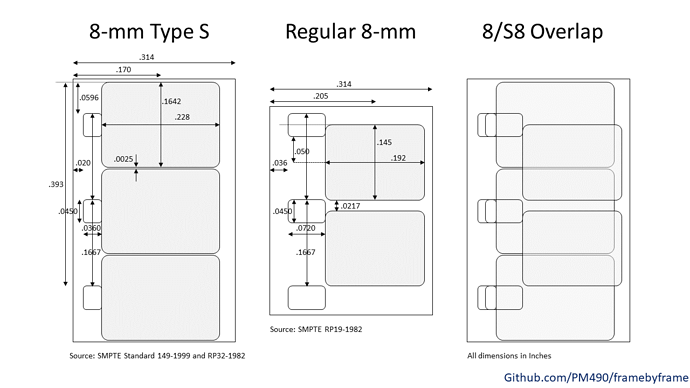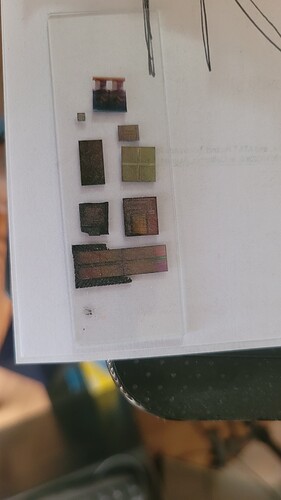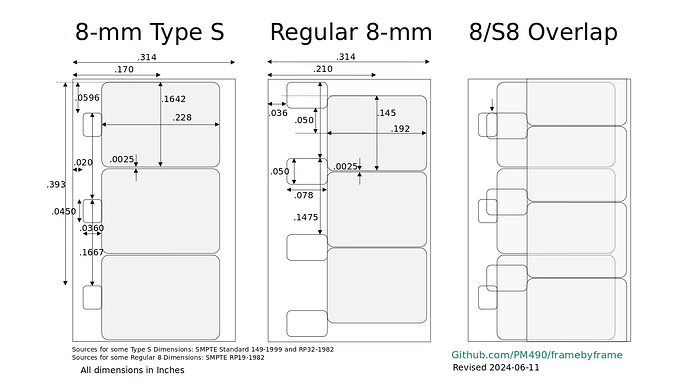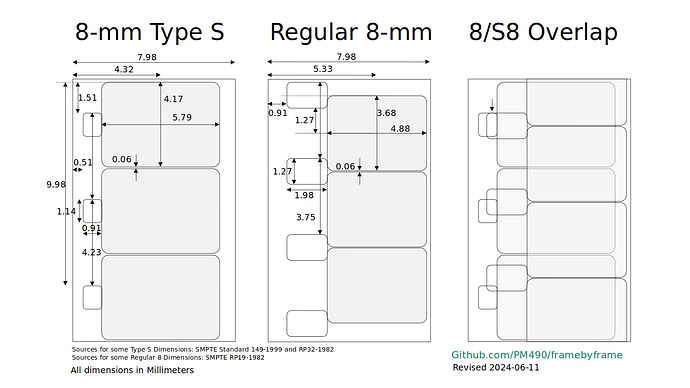here’s an additional reference - with at least one typing error: the fillet sizes are 0.13 mm, not the 0.013 mm cited on that page. All other dimensions seem to be ok.
UPDATE: Actually, I was able to “sort of” reconstruct the way I arrived at the dimensions posted above in the drawing.
Basically, I searched the internet for information about the dimensions of the Super-8 format, but initially only found conflicting information. I than scanned a small slice of Super-8 footage and compared the information found on the internet with my scan. Only to discover that probably most drawings/dimensions I had found so far were at most good guesses. But: the reference in the first paragraph of this post stood out as perfectly matching the scan of my own footage. Also, it was in familiar SMPTE parlance. So I decided to use these dimensions as basis for my drawing.
With two exceptions: one dimension which I think is wrong is the fillet size, which is certainly closer to 0.13 mm in all of my film stock than to the one cited in the reference.
The other dimension which I think is probably only partially correct is the width of sound strip (balancing track) on sprocket holes’ side. The sound movies I measured (both commercial ones and my own ones, which were normal Super-8 footage coated in the early '80s with magnetic stripes after editing) had a width of at least 0.3 mm, not the 0.13 mm cited in the above linked reference.
I think the reason for this is the following: the balancing track was originally only thought to counteract the additional thickness of the real sound track on the other side of the film stock. Because companies used the same magnetic material for both the actual sound track and the balancing track, it was however possible to record onto that balancing track additional sound. Which soon some people did. “Duo”-Sound projectors appeared which were able to record and play back on both tracks. I think that was the time were the balancing track was specified to have a width of 0.13 mm. Realizing that the two audio channels might also be used as a stereo sound media, later in history “Stereo”-sound projectors appeared. I think this was the time the width of the balance track was increased to used nearly all the available width between the edge of the film and the sprocket holes. In this way, the sound quality of the channel, specifically the noise level, could be improved.
In fact, my own “Stereo”-sound projector delivered quite satisfying sound from both channels - there was barely a difference noticable (certainly not by the unexpecting audience).
So in summary, I think that my dimensioning of the Super-8 format gets quite close to the truth of the subject. Not 100% sure about the width and placement of the balance sound strip, but I think that varied anyway between different suppliers. Also, as already noted, basically no camera manufacturer kept the camera window to the specs. I even have seen cameras which exposed partially the area between the sprockets with image data. The same goes for most projection windows. They are typically a little bit smaller than what the specs state.




